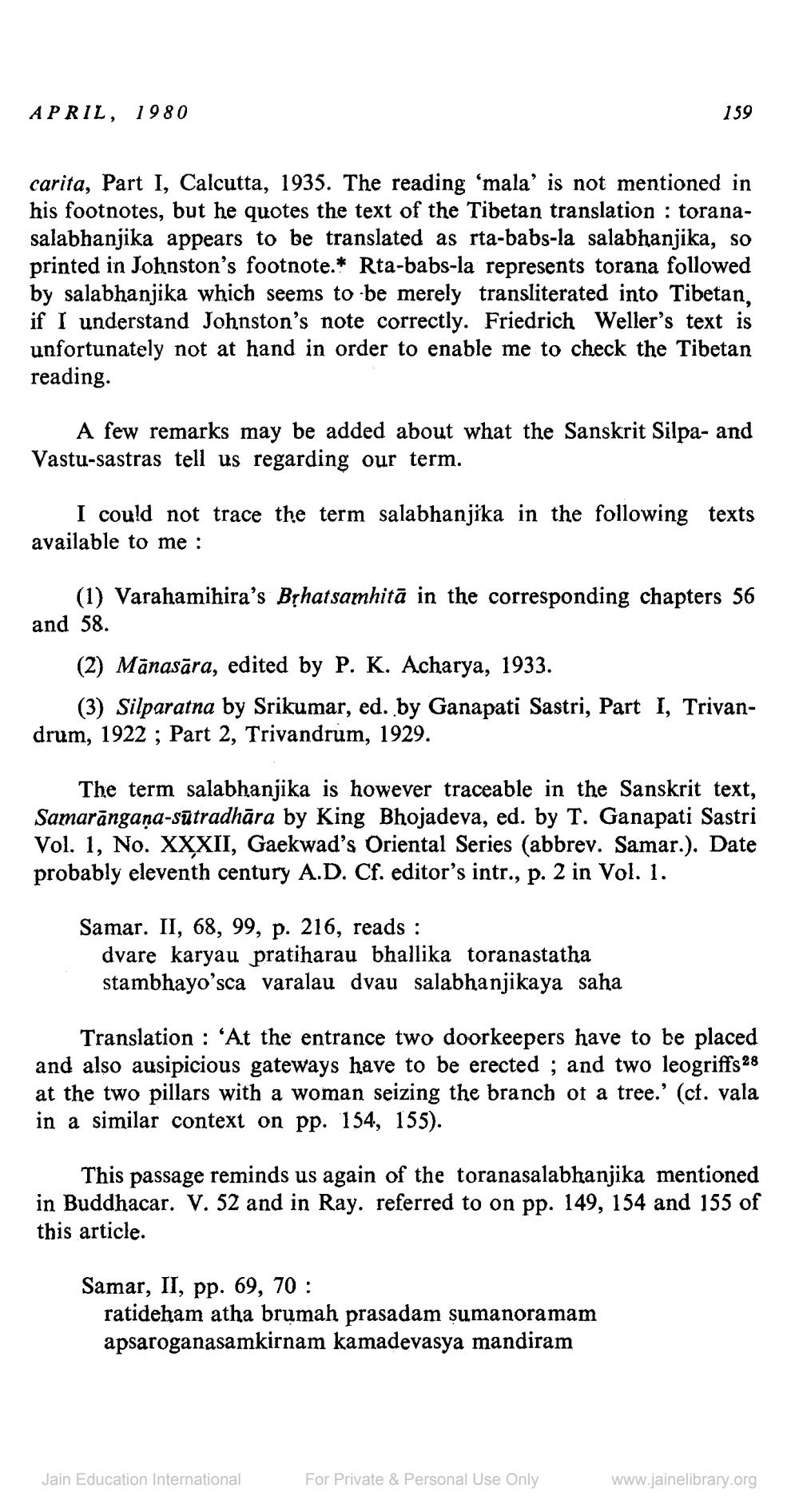________________
APRIL, 1980
carita, Part I, Calcutta, 1935. The reading 'mala' is not mentioned in his footnotes, but he quotes the text of the Tibetan translation: toranasalabhanjika appears to be translated as rta-babs-la salabhanjika, so printed in Johnston's footnote.* Rta-babs-la represents torana followed by salabhanjika which seems to be merely transliterated into Tibetan, if I understand Johnston's note correctly. Friedrich Weller's text is unfortunately not at hand in order to enable me to check the Tibetan reading.
A few remarks may be added about what the Sanskrit Silpa- and Vastu-sastras tell us regarding our term.
I could not trace the term salabhanjika in the following texts available to me :
159
(1) Varahamihira's Bṛhatsamhita in the corresponding chapters 56 and 58.
(2) Mānasāra, edited by P. K. Acharya, 1933.
(3) Silparatna by Srikumar, ed. by Ganapati Sastri, Part I, Trivandrum, 1922; Part 2, Trivandrum, 1929.
The term salabhanjika is however traceable in the Sanskrit text, Samarāngaṇa-sūtradhāra by King Bhojadeva, ed. by T. Ganapati Sastri Vol. 1, No. XXXII, Gaekwad's Oriental Series (abbrev. Samar.). Date probably eleventh century A.D. Cf. editor's intr., p. 2 in Vol. 1.
Samar. II, 68, 99, p. 216, reads:
dvare karyau pratiharau bhallika toranastatha stambhayo'sca varalau dvau salabhanjikaya saha
Translation: 'At the entrance two doorkeepers have to be placed and also ausipicious gateways have to be erected; and two leogriffs 28 at the two pillars with a woman seizing the branch of a tree.' (cf. vala in a similar context on pp. 154, 155).
This passage reminds us again of the toranasalabhanjika mentioned in Buddhacar. V. 52 and in Ray. referred to on pp. 149, 154 and 155 of this article.
Samar, II, pp. 69, 70:
ratideham atha brumah prasadam ṣumanoramam apsaroganasamkirnam kamadevasya mandiram
Jain Education International
For Private & Personal Use Only
www.jainelibrary.org




